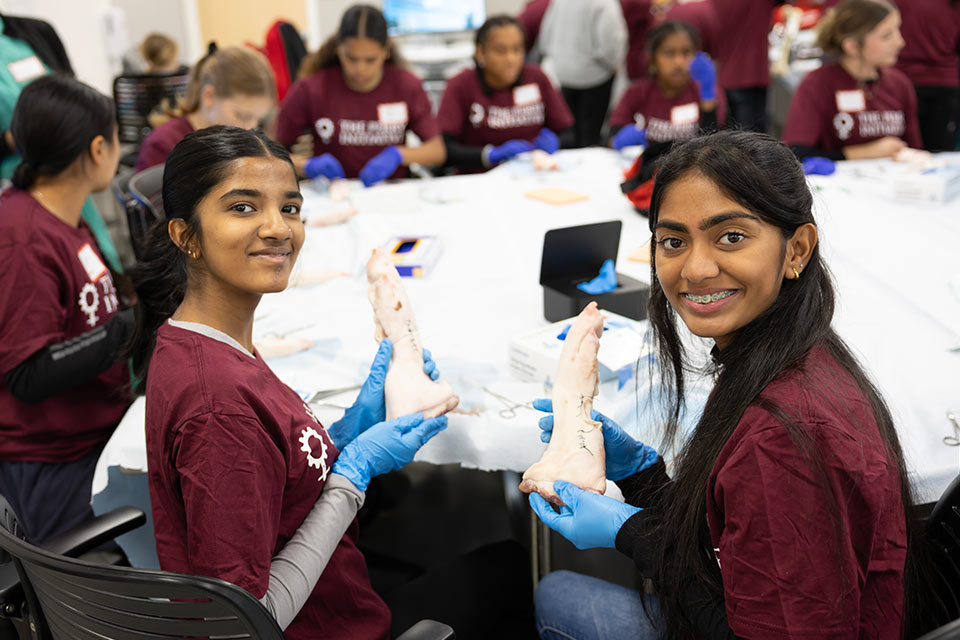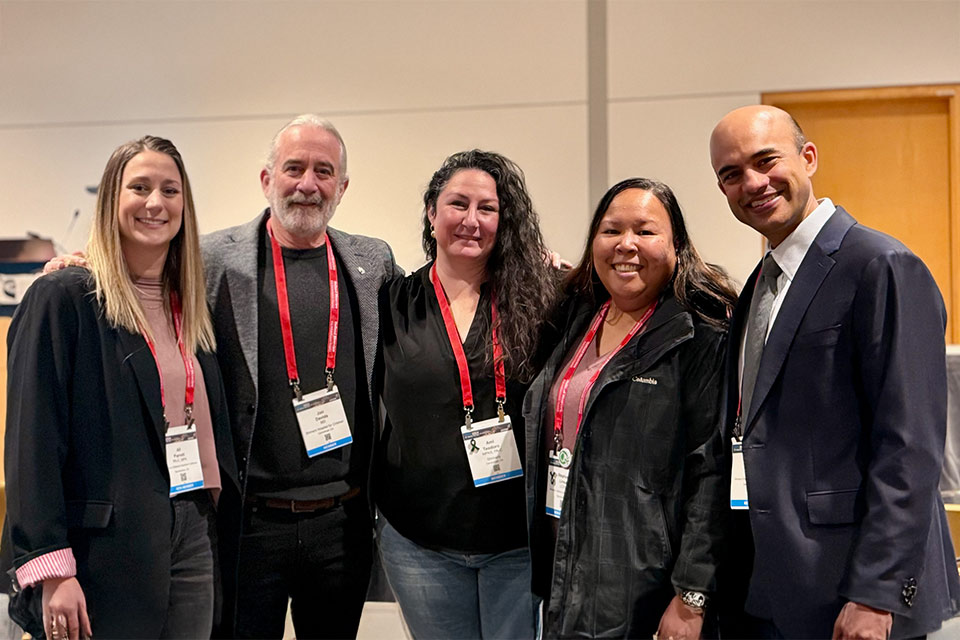Changing the Trajectory of Young Athletes' Lives Through Research, Technology and Treatment

Patrick Fischer, Ph.D., is the motion analysis engineer at Shriners Children's Northern California.
Motion analysis engineer at Shriners Children’s Northern California Patrick Fischer, Ph.D., is thrilled to be a part of the cutting-edge research and treatment that is core to the mission of Shriners Children’s healthcare system. He is especially excited to be leading a multi-disciplinary team whose goal is to prevent re-injury and promote healing in young athletes.
Pediatric Sports Injuries on the Rise
With increasing numbers of young athletes participating in more competitive sports activities, there continues to be a rise in pediatric sports injuries – injuries that need to be studied and treated differently than similar injuries in adults.
In recent years, there have been dramatic spikes in anterior cruciate ligament injuries, commonly known as ACL tears. These injuries often occur during sports that involve sudden stops or changes in direction, jumping and landing, such as soccer, basketball, football and downhill skiing. The tear happens in a ligament that helps connect the femur to the tibia.
ACL Injuries' High Costs
An ACL tear can keep a young athlete on the bench for months, which can lead to depression, social isolation and lost opportunities.
“When you can prevent an ACL injury, or re-injury, or you can help a kid recover quickly and get back to full strength, you help that young person perform the way they were intended to,” Dr. Fischer said. “If we can predict who is at elevated risk for an ACL injury, or we inform treatments that help a patient have a full and fast recovery, we can change the trajectory of that young athlete’s life.”
The financial costs related to ACL injuries also have a very real impact on a family’s budget, and on the U.S. healthcare system.
Dr. Fischer said the increasing numbers of pediatric ACL injuries is costing the U.S. healthcare system about $2 billion a year nationally in additional surgeries, physical therapy and other treatments.
By establishing best practices and standardizing care for ACL injuries, Dr. Fischer said we can improve recovery for children and see as much as a 20% cost savings – over $200 million in savings for the U.S. healthcare system.
Knowing this, Shriners Children’s is taking action.

Fischer placing reflective markers on patient's body that allow the collection of data to see how a patient walks, runs or jumps.
Setting Industry Standards of Care
Dr. Fischer is a leading member of the Shriners Consortium for Outcomes, Research and Education in Sports (SCORES) that includes surgeons, physical therapists and motion analysis engineers who are committed to sharing ideas, conducting research, advancing technology, and improving outcomes for young patients who have sports-related injuries.
Given the size of the Shriners Children’s network and the number of patients the hospitals treat each year, SCORES has unmatched opportunity for research that can lead to industry-wide standards of care, unlike anywhere else in the world.
“We have codified a standard biomechanical model for our clinical motion analysis services, everything from how cameras are aimed and calibrated to where markers are placed and how the model is constructed,” Dr. Fischer said.
“With our labs collecting data the exact same way, with the exact same quality controls, we have the ability to treat 14 biomechanical labs as one giant lab that’s operating in sync,” Dr. Fischer said.
This standardized approach is critical for several reasons, he said.
First, it creates a data translation protocol across different sites, so Shriners Children’s physicians can easily collaborate across the system to share focused expertise and research.
Additionally, the Shriners Children’s standardized approach can serve as a best practice for an industry that is growing, with more commercially available packages for motion analysis coming on the market, and the use of gait analysis increasing among sports teams and some outpatient clinics.
Shriners Children's Motion Analysis Centers Inform Treatment
The work done in Shriners Children’s motion analysis centers (MAC) is very specialized. Most Shriners Children’s MAC engineers have a master’s degree or a Ph.D. to create testing models, gather and interpret data, and troubleshoot issues as they arise.
MAC engineers use technology to track the movements of patients who are under the care of Shriners Children’s physicians for a wide range of conditions including cerebral palsy, brachial plexus, scoliosis, spinal cord injury, arthrogryposis, clubfoot, muscular dystrophy and spina bifida.
The Shriners Children’s healthcare system sees more than 4,000 unique patients a year across its 14 MAC labs, tracking each patient’s development and guiding specialized healthcare for a range of diagnoses. In the Northern California MAC lab, Dr. Fischer sees about 400 patients a year, and uses the collected data to help personalize each patient’s treatment plan.
In the MAC lab, engineers put reflective markers on very specific parts of the body that allow the collection of data to see how a patient walks, runs or jumps. The data illustrates a patient’s range of motion and performance, showing the loads felt at the different joints that are involved in movement.
This information helps inform treatments – from surgery to physical therapy – tailored for each individual patient.
“By providing objective numerical data, we are helping improve a kid’s ability to walk,” Dr. Fischer said. “The work we do in the MAC lab leads to treatments that make it easier for parents to play with their kids, and it helps minimize the gap between the kids we see in the motion lab and a typically developing child.”
Informing Monumental Change
Dr. Fischer has been working with the Corporate Director of Shriners Children's Motion Analysis Centers Ross Chafetz, Ph.D., D.P.T., and Louis Veilleux, Ph.D., a specialist in sport analysis, to synchronize Shriners Children’s 14 MAC labs to collect data about ACL injuries in a standardized way. Their efforts will result in one of the world’s largest sports-specific clinical databases, and could help create an algorithm to determine who may be predisposed to ACL tears, as well as help develop treatments that reduce the odds of ACL re-injury.
“With the work we are doing on ACL injuries, we can have a monumental impact on orthopedic standards of care,” Dr. Fischer said. “It gives me chills every time I think about it. I don’t think it’s an exaggeration to say what we are doing will be revolutionary.”

Keep In Touch
Join our mailing list to stay up to date on everything that's happening at Shriners Children's.



